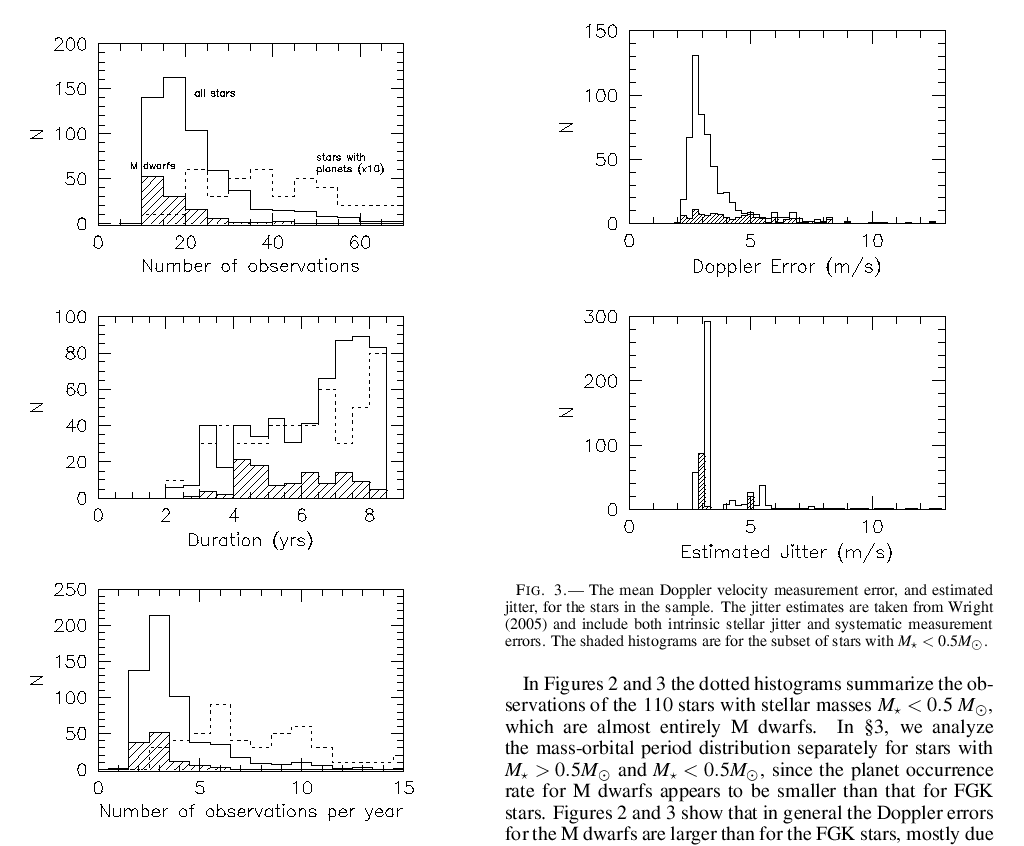
 Copyright © Michael Richmond.
This work is licensed under a Creative Commons License.
Copyright © Michael Richmond.
This work is licensed under a Creative Commons License.
This is just a quick look at some papers which have appeared recently describing extrasolar planets. Oh, and I stuck in one item on which I'm working, too.
Scientists using Doppler shifts to search for planets have performed statistical analyses on years of data they have acquired.

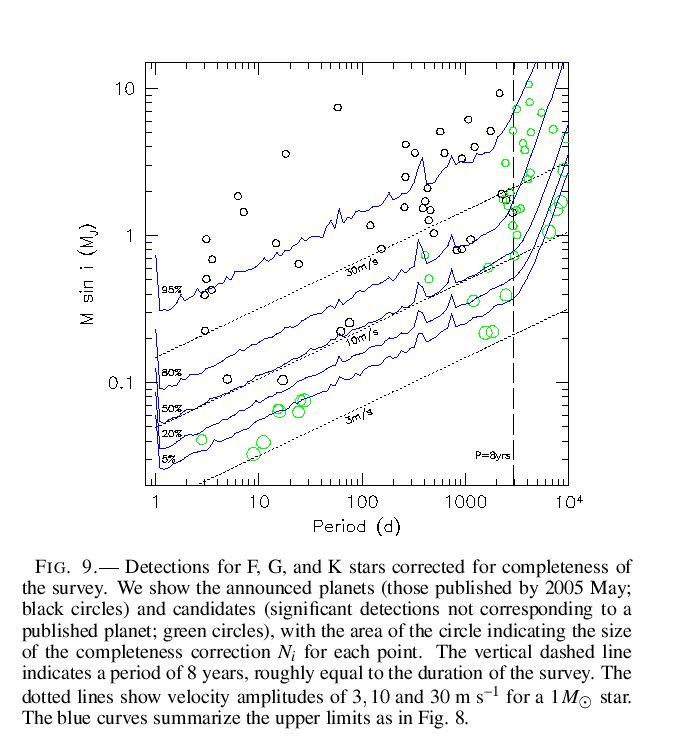
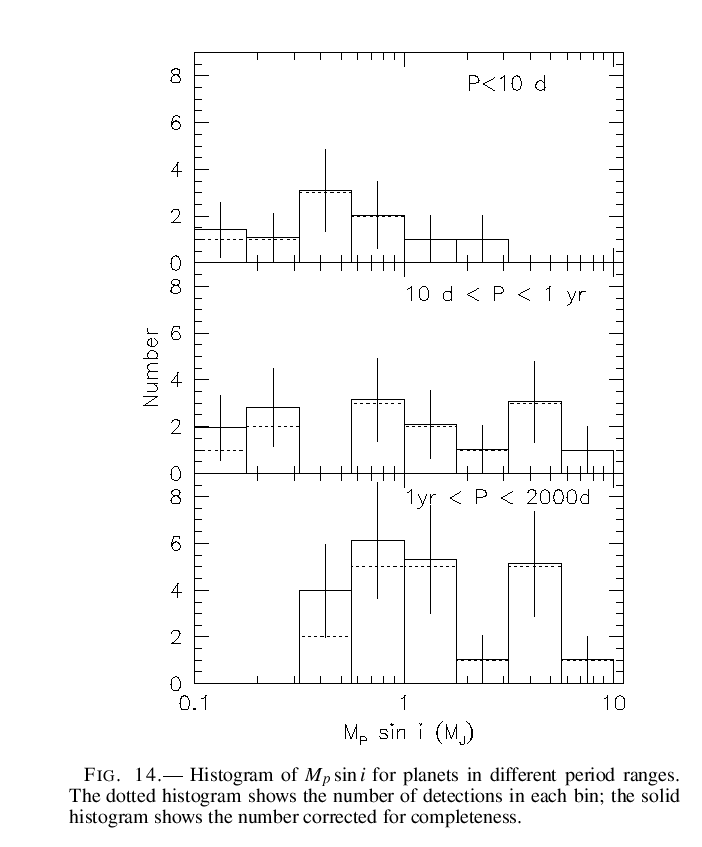
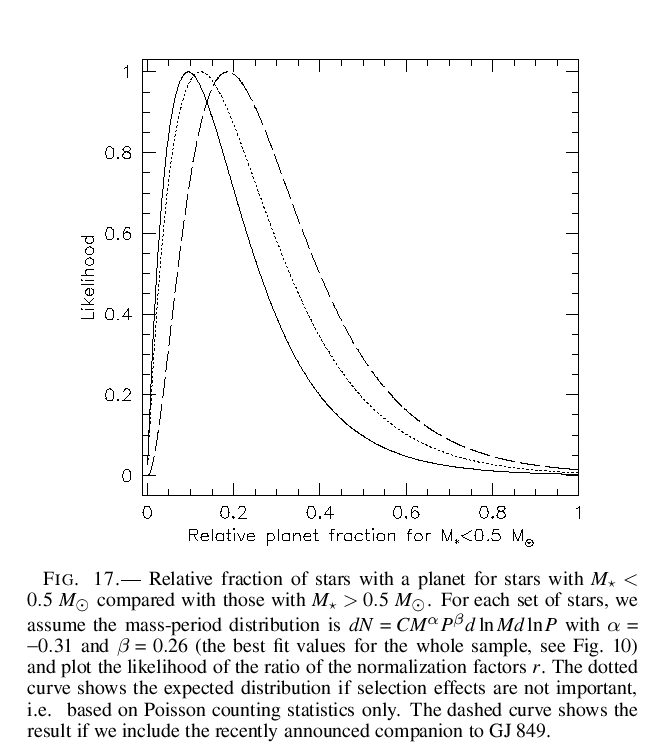
The COROT satellite carries a 14-cm off-axis telescope with a set of 4 2048x2048 CCDs, providing a field of view of about 1.3 degrees.
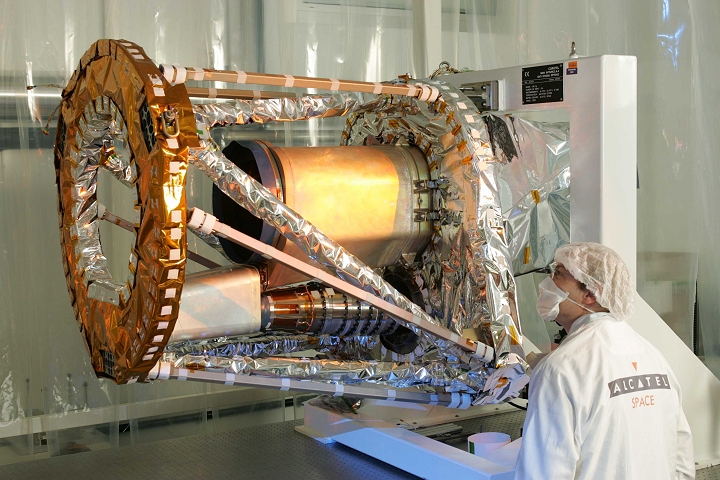
Half of the field is defocused, for asteroseismology observations, and the other half is focused, for exoplanet searches.
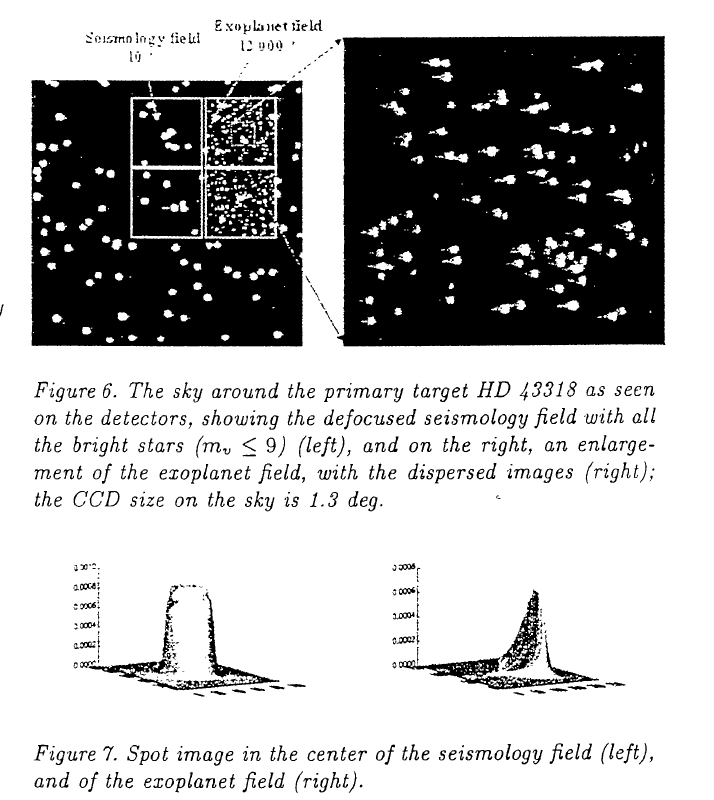
COROT was launched in December 2006, and its first dedicated observations ran from Feb 6 to Apr 2, 2007. The first papers based on those observations have just been placed onto astro-ph. They describe two new extrasolar planets:
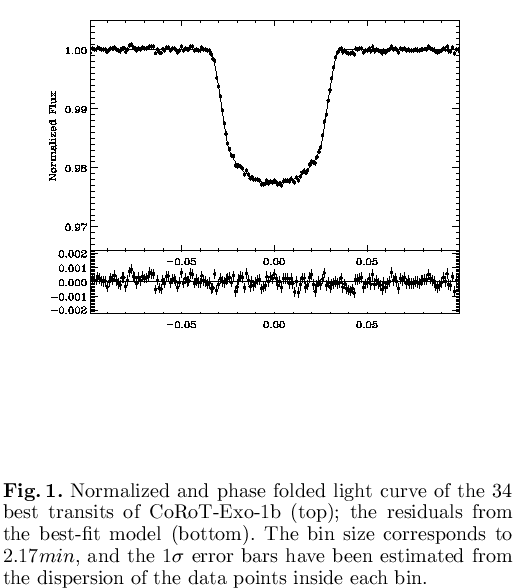
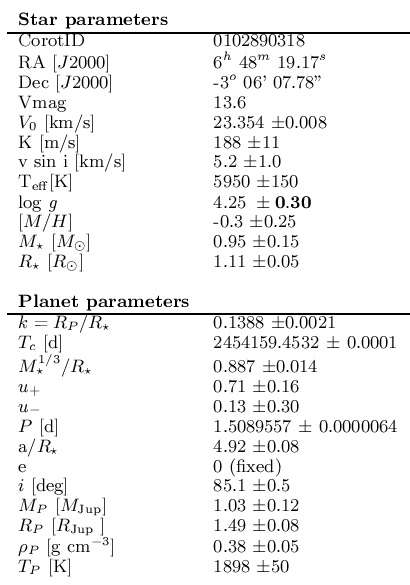
The second planet was harder to find, since its host star has large spots which cause periodic variations.
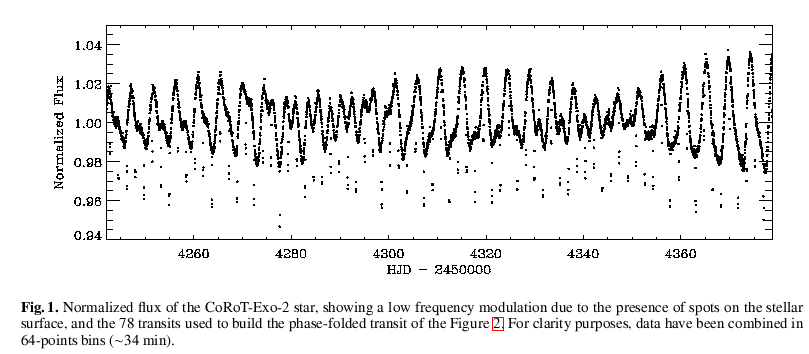
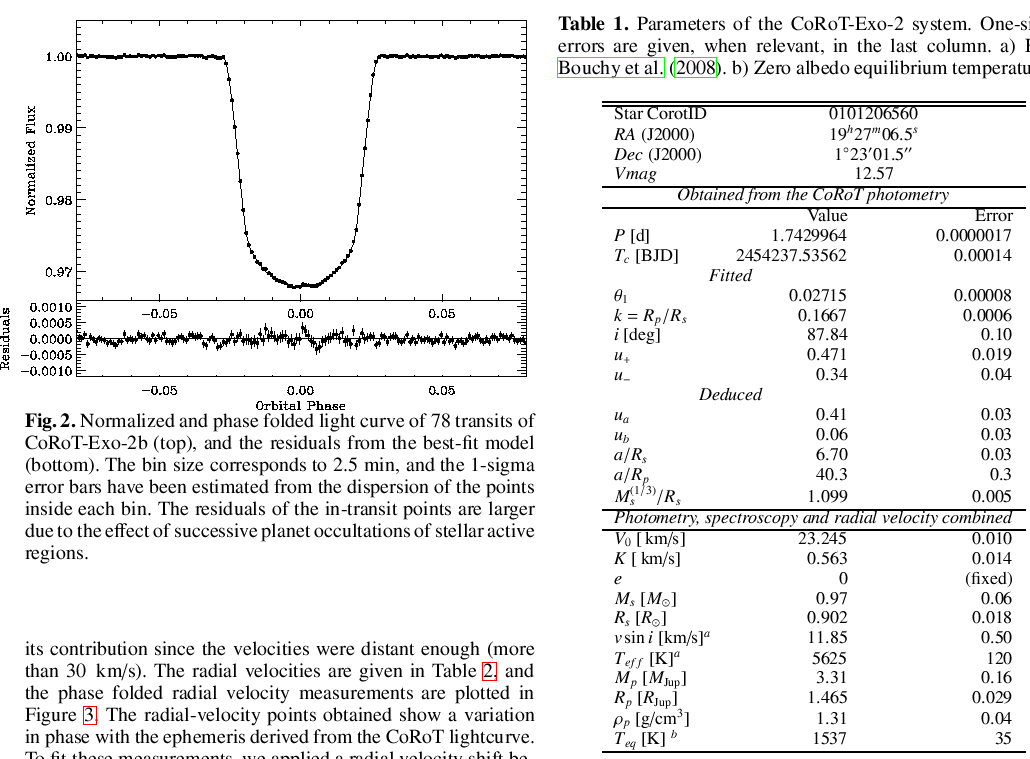
Ground-based spectra during a transit of this planet show changes in the apparent radial velocity of the star due to the Rossiter-McLaughlin effect: the planet covers a portion of the star which rotates towards us first, then later covers a portion of the star which rotates away from us. These measurements confirm that the apparent transit really is due to a planet (not another star or varying background object), and place constraints on the angle between the stellar spin axis and the planet's orbital axis; in this case, 7.2 +/- 4.5 degrees, or very nearly the same.
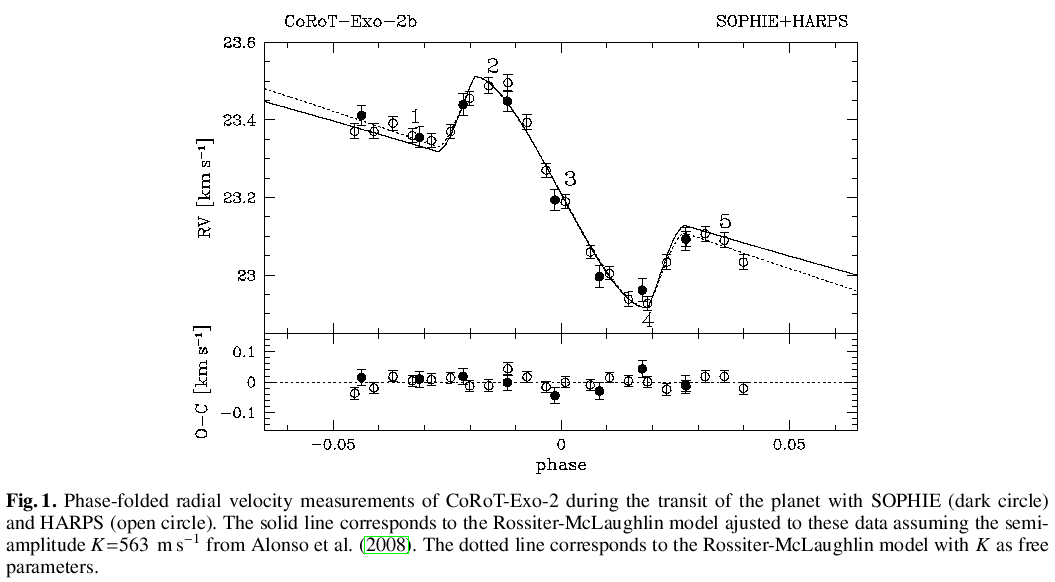
The planet HD 209458b is only 0.045 AU from its host star, qualifying as a "Hot Jupiter." Since the upper atmosphere must be very hot, it is possible that hydrogen might leak out of the atmosphere into space, forming an extended cloud of hydrogen around the planet. Researchers used a prism on the ACS camera to perform slitless spectroscopy in the near-UV. They looked during the periods around two transits, hoping to see absorption of the stellar flux by this hydrogen cloud at the wavelength of Lyman-alpha.
The results are somewhat sketchy, due to the low signal-to-noise and small number of the measurements.
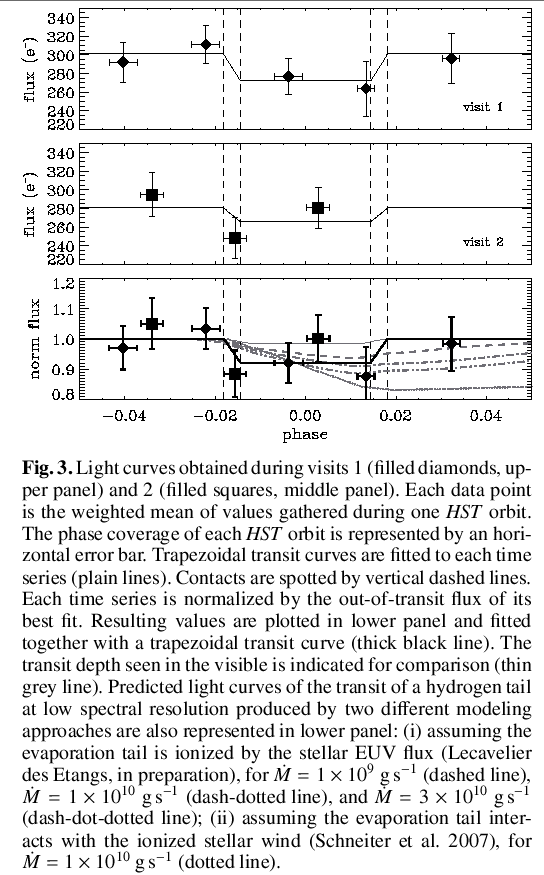
The researchers conclude that they have detected an extended envelope of hydrogen around the planet.
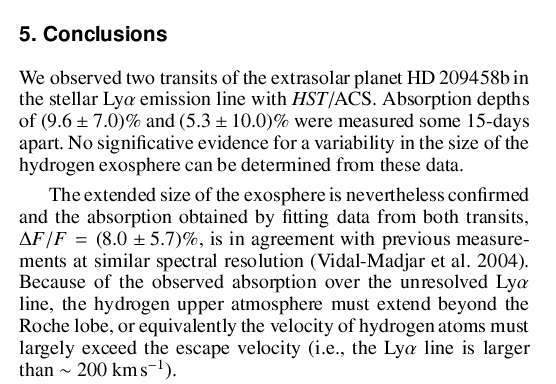
Astronomers observed the planet orbiting HD 189733 with the NICMOS-3 camera in low-resolution spectroscopy mode (via a grism), allowing measurements in the range from 1.4 to 2.5 microns. As the planet passed in front of its host star, its solid disk blocked the starlight completely at all wavelengths ...
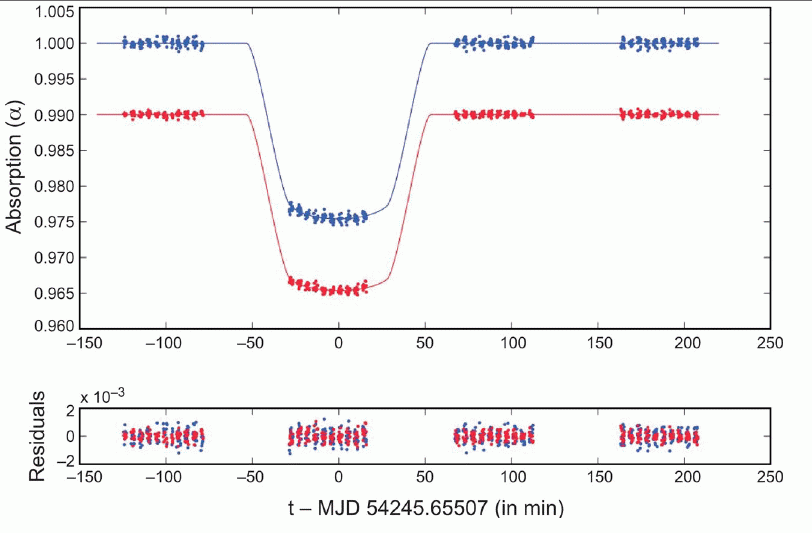
... but its atmosphere absorbed a bit of the starlight selectively: more light was absorbed at some wavelengths than others. The team was able to produce a "difference spectrum", showing the EXTRA absorption of starlight when the planet was in front of the star. Note that the graph they present is "upside down", relative to the usual convention: this graph shows absorption lines as PEAKS pointing upwards.
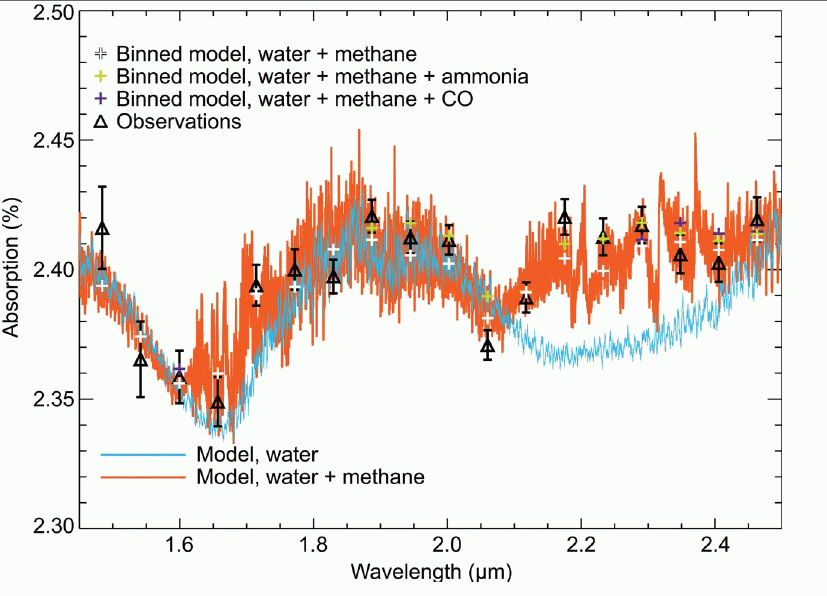
The difference spectrum
As you may recall, Bode's Law (or the Titius-Bode Law) refers to a curious mathematical progression in the orbital radii of the planets in the Solar System:

The authors of this paper, Arcadio Poveda and Patricia Lara, note that one can express this relationship more generally as an exponential function.
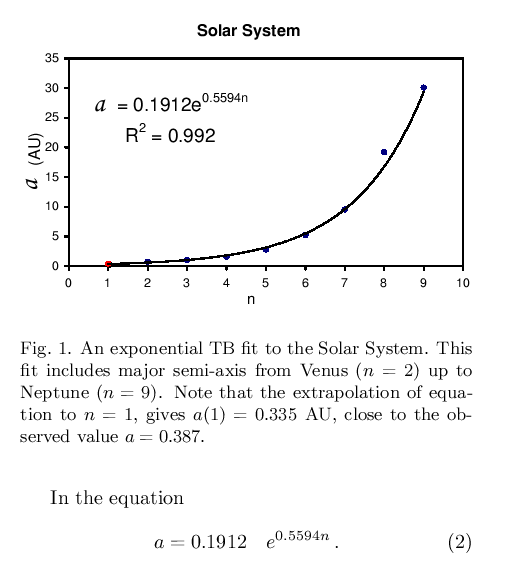
Now, the star 55 Cancri has several planets orbiting it. The first was discovered in 1996, and the most recent just last year.
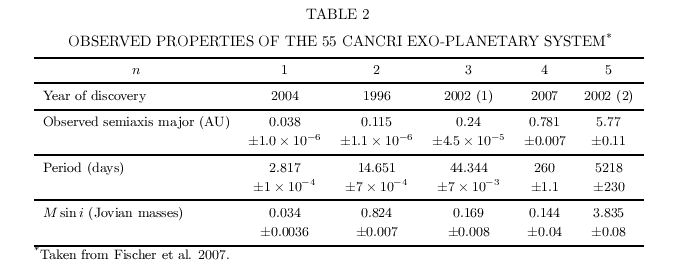
The authors first note that an exponential function fit to the first four planets to be discovered roughly fits the newly-discovered fifth planet; they then go on to use a fit to all five known planets to predict the locations of two unknown planets in this system. They place more weight on the prediction of the planet at index n=5, since that fills a gap between two of the known planets.
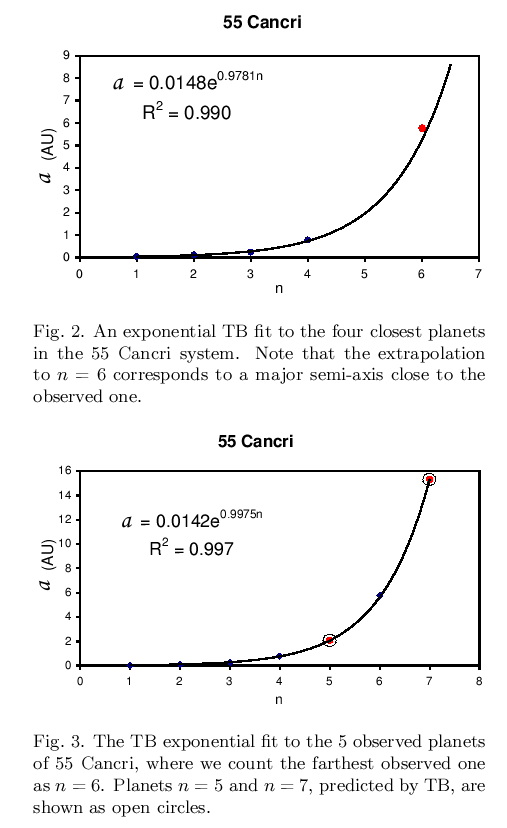
Transits reveal the presence of planets directly, but they are difficult to see: a planet the size of Jupiter passing in front of a star the size of the Sun will produce only a 1-percent drop in the star's light. That's not very easy to detect. A planet the size of the Earth would produce a drop of only 0.01-percent, or 0.0001 magnitudes; that's completely impossible to detect with ground-based telescopes.
However, we can detect small planets INDIRECTLY by looking for their effects on the observable properties of large planets. For example, the gravitational perturbations of a small planet on a larger one might cause its transits to occur slightly earlier or slightly later than expected.
In order to detect such perturbations, one must monitor known extrasolar planets faithfully over long periods of time, and measure very carefully the properties of each transit.
A team of astronomers, led by Holland Ford at Johns Hopkins, is carrying out this task. We use the 0.5-meter SDSS Photometric Telescope at Apache Point, New Mexico.
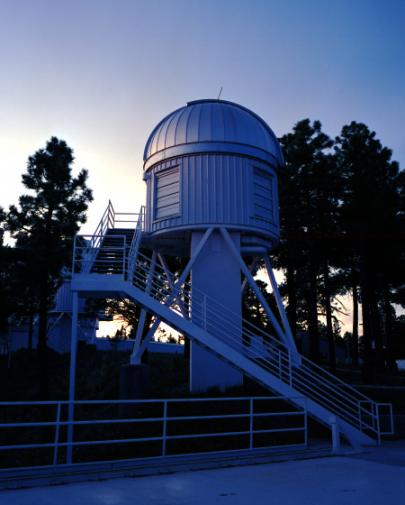
Douglas Tucker (Fermilab) makes sure that the raw data is transferred properly from the mountain to Fermilab, and runs it through the first steps of reduction. I then perform ensemble photometry on the target and other stars in the field to create a light curve of the event.
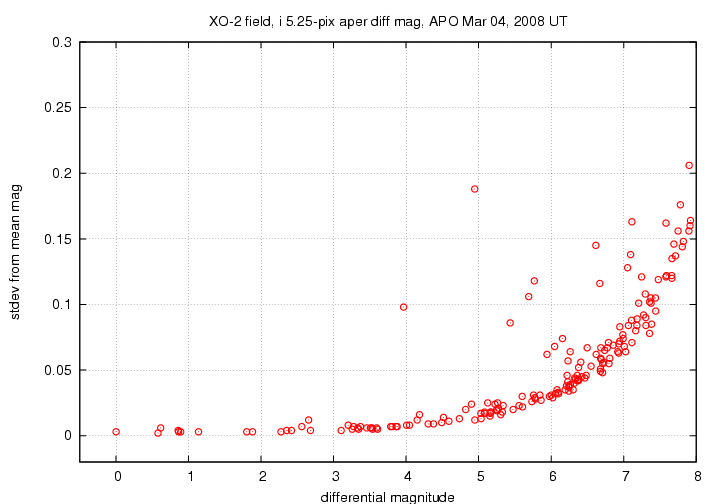
For example, the star "XO-2"
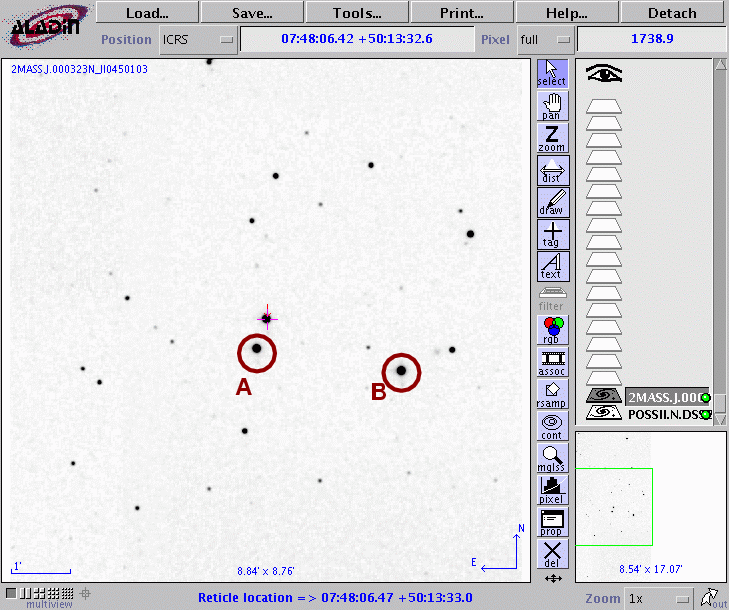
is orbited by a planet roughly the size of Jupiter, with a period of about 2.6 days. On a good night, the PT can detect its transit cleanly, even though the depth is only 0.014 mag.
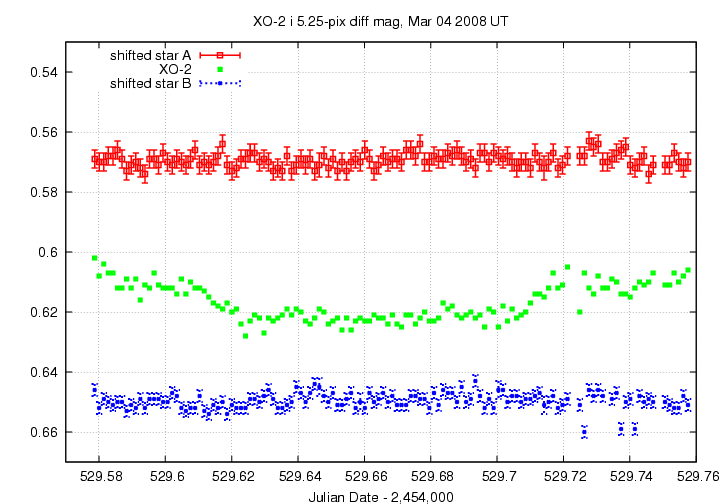
Some of our first results will be presented at the Summer 2008 AAS meeting in St. Louis.
 Copyright © Michael Richmond.
This work is licensed under a Creative Commons License.
Copyright © Michael Richmond.
This work is licensed under a Creative Commons License.